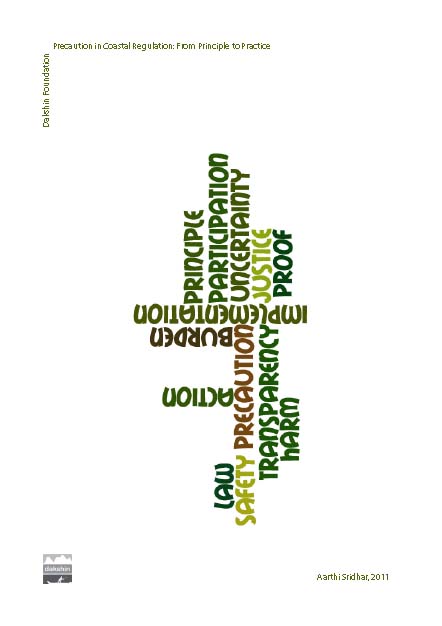 The decision to act or not act, and further how to act in the face of unknowns or uncertainties is the subject matter of the precautionary principle (PP). It is against this historical backdrop of unknowns in environmental governance that the present study on the precautionary principle was conducted.
The decision to act or not act, and further how to act in the face of unknowns or uncertainties is the subject matter of the precautionary principle (PP). It is against this historical backdrop of unknowns in environmental governance that the present study on the precautionary principle was conducted.
The present framework for environmental governance provides a number of areas where precaution can and must be applied. In addition to these areas, the present report is the outcome of a descriptive study that shows the extent to which key elements of the precautionary principle are embedded in the specific case of two environmental laws related to coasts. The study examines key areas of the clearance continuum (law-making, clearance and monitoring) through a single broad question: To what extent is the approach of precaution embedded in decision-making under the CRZ Notification 1991 and the Water Act, 1974?
Sridhar attempted to examine this question on a continuum that examines a) the text of the law, b) the conditions under which projects are cleared or rejected and c) issues related to the monitoring of these conditions. The Asia and Pacific Workshop Report of the Precautionary Principle Project declared that there are both explicit and implicit uses of the precautionary principle. It states that there are some instances where the PP’s application is explicit and unambiguous whereas in other decisions the PP is implicit. They also raise an important point that to actually determine whether a decision was indeed precautionary or not (where it is not explicit) requires an examination of the context and motivations for decisions and management interventions.
The report also states that it is not always easy to determine whether decisions or management interventions have been implicitly precautionary, especially as many decisions in biodiversity conservation and natural resources management, take place in the face of some uncertainty. These observations set the limitations of the study in which the author relies on the text of the law and final project related decisions as her data sets.
The author’s examination of the operation of elements of the precautionary principle in these laws ranges from a conscious application to an inadvertent application. She does so by recognising that all decision-making over environmental projects in the country takes place under constraints such as limited scientific data or understanding, limited time and resources and under certain procedural requirements.
Therefore assessing to what extent these laws and their decision, and decisions taken under these provisions are grounded in science and to what extent they already incorporate and operationalise elements of precaution gives us an idea of their performance under a full-fledged and fully conscious precautionary regime.
The report can be downloaded below -
/articles/precaution-coastal-regulation-principle-practice-report-dakshin-foundation